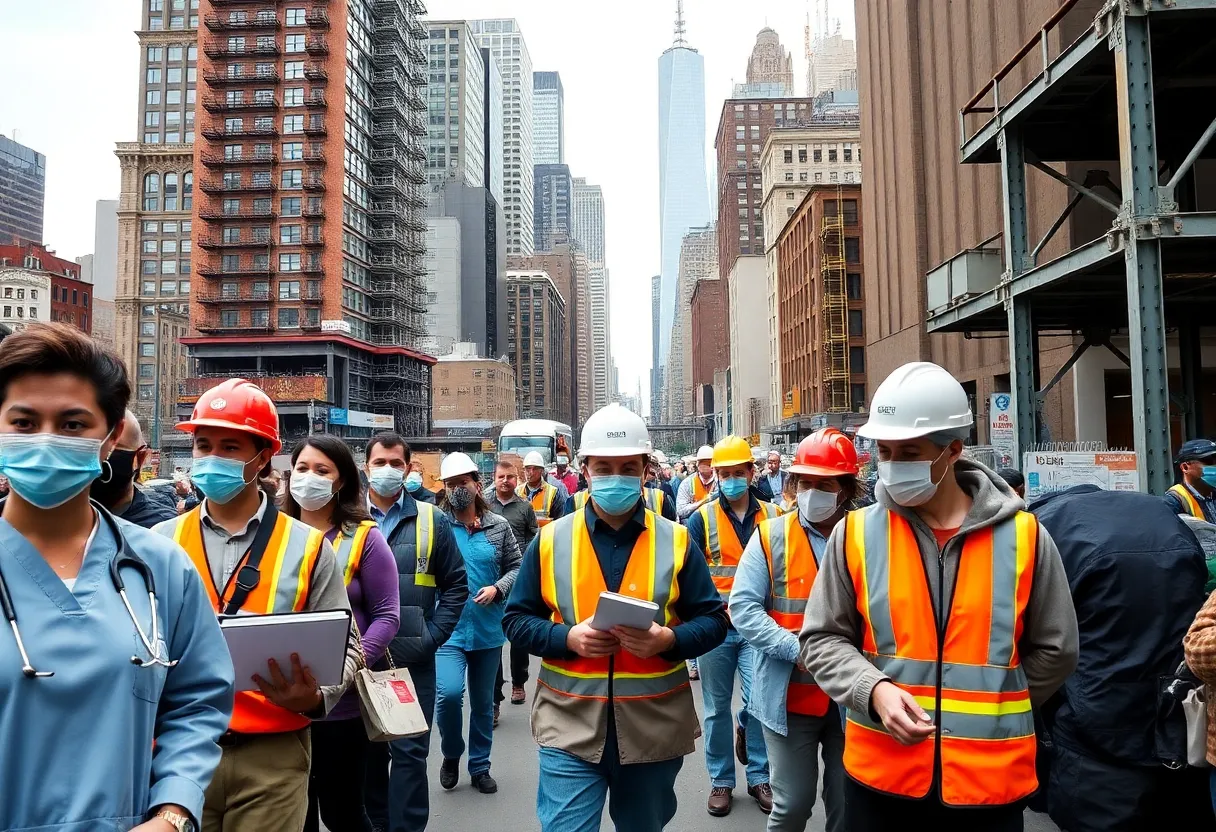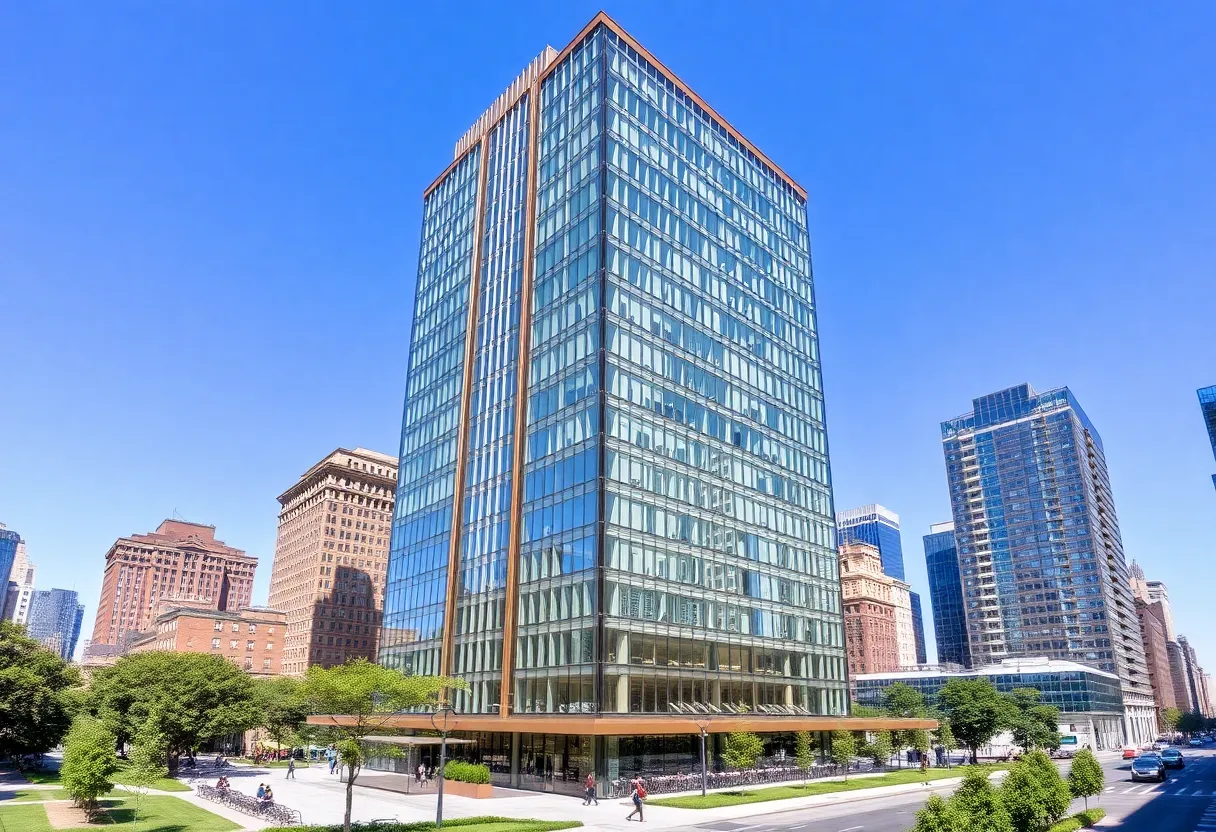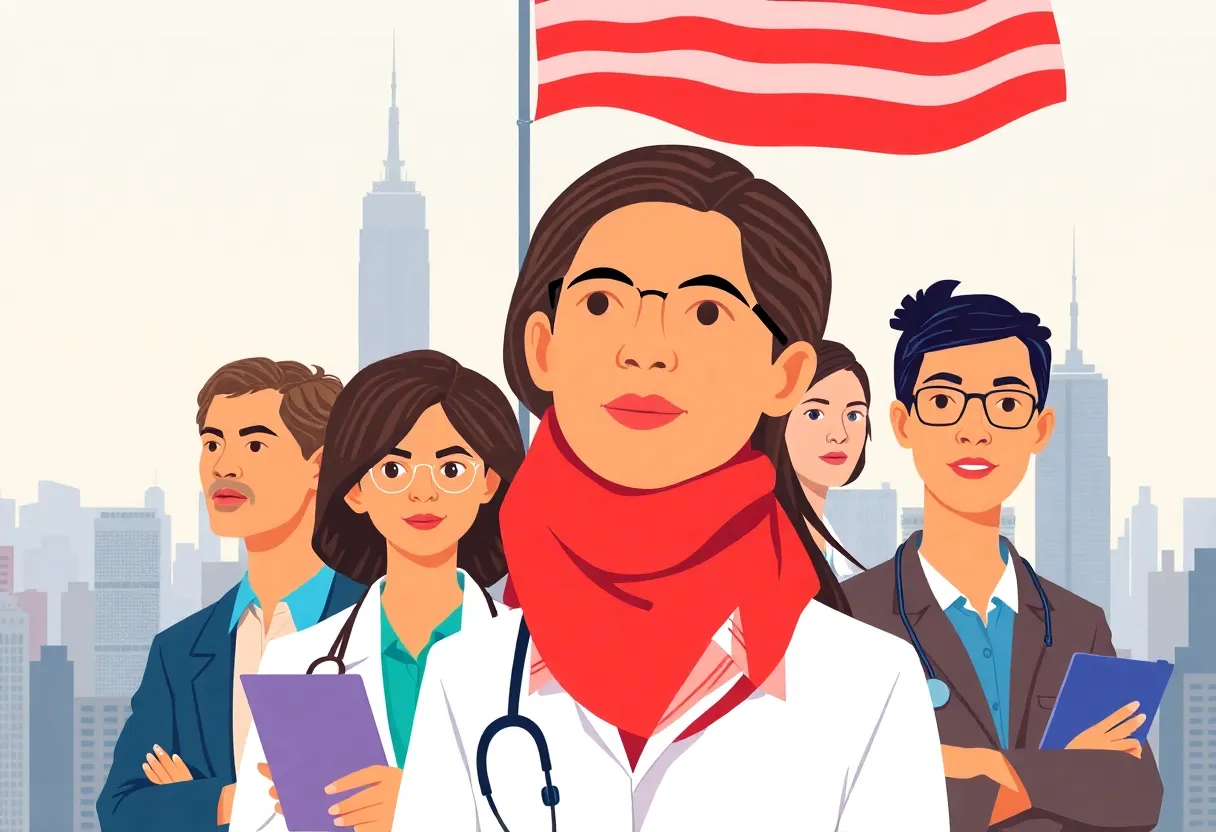News Summary
New York City is facing significant economic challenges due to labor shortages across multiple sectors, particularly in healthcare, manufacturing, and construction. An anticipated shortfall of healthcare professionals and skilled trade workers highlights a pressing need for solutions to fill the growing number of job openings. Proposals to enhance labor force participation and reform immigration policies may aid in addressing these critical workforce issues and ensuring a robust economic future for the region.
New York City is facing a significant threat to its economic outlook as labor shortages begin to hinder job growth statewide and nationwide. Despite moderate positive job reports, the escalating number of unfilled positions across various sectors reveals a concerning trend that could impact the region’s economy significantly.
Labor shortages are particularly acute in the health care sector. An estimated shortfall of 187,000 physicians and 208,000 registered nurses is anticipated over the next decade. New York is expected to experience a workforce shortage of 61,000 health care workers by 2028, highlighting a pressing need for qualified personnel as demand for health services continues to grow.
In addition to health care, the manufacturing and construction industries are also grappling with labor deficits. Approximately 2.1 million manufacturing jobs are projected to go unfilled by 2030, while homebuilders are struggling to find carpenters, plumbers, electricians, and other skilled tradespeople. A survey indicated that 34% of small business owners in New York reported having job openings that could not be filled, with 86% citing a lack of qualified candidates as the main issue.
The labor market dynamics have shifted dramatically over the past several decades. From 1960 to 1989, labor force growth averaged 2% annually. However, from 2004 to 2024, this figure dwindled to just 0.66% annually. Over the last 20 years, New York’s labor force growth has calculated to be merely one-third of the average rate recorded from 1977 to 2004. This stagnation poses a considerable threat to economic prosperity and growth in the region.
Moreover, the U.S. economy heavily relies on immigration for both population and labor supply growth. Recent data shows that 83% of the net population growth from 2020 to 2024 was attributed to immigration. If not for these newcomers, 20 states, including New York, would have experienced a decline in population. The increasing share of U.S. workers aged over 55, which has grown from 12% in 1995 to 23% today, has also contributed to diminished labor force participation, a trend exacerbated by the COVID-19 pandemic that saw 8.2 million workers exit the labor force.
To combat these labor shortages, several proposals have been put forth. One suggestion is to increase labor force participation by eliminating disincentives to work, such as repealing the Social Security retirement earnings test and expanding the Earned Income Tax Credit. Comprehensive immigration reform is essential for strengthening enforcement and facilitating pathways for legal immigration, which would help alleviate some of the workforce shortages faced by various sectors.
Furthermore, retaining international students, particularly in STEM fields, is crucial. Recommendations to address this include extending the Optional Practice Training program and creating permanent residency pathways for skilled graduates. Eliminating obsolete regulations that hinder workforce entry, such as the stringent licensing requirements, and regularly reviewing these processes are also seen as key measures needed to encourage a more energized labor market.
To meet the skills gap, integrating workforce-oriented learning and internships into educational programs is vital. Expanding apprenticeship initiatives and increasing funding for technical education can help prepare students for the evolving demands of the job market, ensuring a capable workforce in the future.
New York City significantly benefits from its foreign-born residents, who make up more than one-third of its population. Addressing the multifaceted workforce challenges will require a coordinated effort among policymakers, business leaders, and educational institutions. Only through collaboration can the U.S. maintain its competitive labor force advantage and secure a promising economic outlook for New York and beyond.
Deeper Dive: News & Info About This Topic
HERE Resources
Why Construction ERP is Important for New York Businesses
Why Construction ERP is Key for New York Companies
Building Smarter in the Empire State: Why Mobile-Enabled Construction ERP is Essential for New York Businesses
New York City Expands Healthcare Workforce Under $4.4 Billion Agreement
Coffee County Schools Prepare for New School Year
New York City Advances Midtown South Zoning Plan
Tragic Shooting in Midtown Manhattan Leaves Four Dead
Federal Reserve Holds Steady on Interest Rates
Bargain Grocery Addresses Food Insecurity in Utica
Lee County Schools Adjust Start Times to Address Bus Delays
Additional Resources
- Construction Dive: New York Contractors Fight Labor Shortages
- Wikipedia: Labor Shortage
- U.S. Chamber of Commerce: States Suffering Most From the Labor Shortage
- Google Search: Labor Shortage Solutions
- WNY Labor Today: New York Contractors Boost Pay to Fight Labor Shortages
- Google Scholar: Labor Shortage Economic Impact
- Politico: Trump’s Immigration Policy Exacerbates Health Care Workforce Shortages
- Encyclopedia Britannica: Labor Market
- Times Union: Farms Fear Catastrophic Worker Shortages
- Google News: Workforce Challenges

Author: STAFF HERE NEW YORK WRITER
The NEW YORK STAFF WRITER represents the experienced team at HERENewYork.com, your go-to source for actionable local news and information in New York, the five boroughs, and beyond. Specializing in "news you can use," we cover essential topics like product reviews for personal and business needs, local business directories, politics, real estate trends, neighborhood insights, and state news affecting the area—with deep expertise drawn from years of dedicated reporting and strong community input, including local press releases and business updates. We deliver top reporting on high-value events such as New York Fashion Week, Macy's Thanksgiving Day Parade, and Tribeca Film Festival. Our coverage extends to key organizations like the Greater New York Chamber of Commerce and United Way of New York, plus leading businesses in finance and media that power the local economy such as JPMorgan Chase, Goldman Sachs, and Bloomberg. As part of the broader HERE network, including HEREBuffalo.com, we provide comprehensive, credible insights into New York's dynamic landscape.





